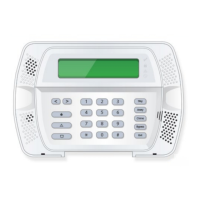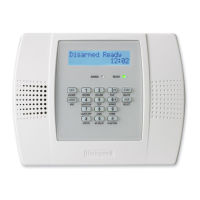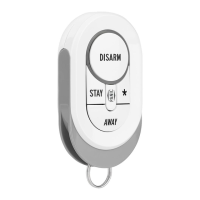Section 19 – System Operation
19-7
Bypassing
Bypassing is a means of directing the control unit to ignore any point(s) in the system, and therefore
inhibit any output commands that would ordinarily be activated. Consequently, a bypassed input point
that goes into an alarm, trouble, tamper, or comm fail condition will not cause a signal to be sent to the
CCC, nor will it cause the local bell to ring or cause any output to activate.
One or more points can be bypassed by entering appropriate commands at the operating panel provided
that:
•
The bypassing option has been activated for those points.
•
The person(s) doing the bypass have been assigned an ID code with the privilege of bypassing that
particular type of point (BA, FA, SPV, HUA or special).
Control Unit and BA Group Options
There are several programmable options associated with the control unit and the BA groups. Many of
the control unit options affect all BA groups. A BA group is defined as an enclosed area that is
protected by burglar alarm sensors, whose protection on/off status is controlled from an operating
panel. The BA points in the system can be divided among as many as eight BA groups.
A separate operating panel can be used to control each BA group; or multiple groups can be controlled
from the same operating panel. Each BA group is given a name by the owner, and this information is
downline loaded into the control unit at the time of installation, along with the BA group options and
other data.
An opening and closing schedule can be assigned to a BA group, if the customer wants to he alerted in
the event of:
•
An irregular opening (certain persons entering the BA group before a specified opening time).
•
A failure to close (BA group has not been closed by a specified closing time).
Other than these instances, there is no reason for assigning opening/closing schedules, nor is there any
UL requirement for assigning them. An opening and/or closing time is required for certain types of CCC
service.
The following is a list of the options:
Option Function
Code 3 Temporal
Son/Bell
This provides for the sounding of the Code 3 temporal signal in the event of
a fire alarm (1/2-sec on, 1/2-sec off for 3 seconds followed by 1 second of
silence). If selected, the Code 3 signal will sound at each operating panel.
Disable Recycle
Delay
This disables the recycling delay for all groups. For an explanation of how
the delay works, see
Recycling Exit Delay
later in this section.
CS Off Command
Enable
This permits a BA group to be turned off via command from CentraScan.
Auto Bell Test
This causes the external bell (connected via the bell relay or Bell PID) to
"bing" at the end of any BA Group exit delay period, to verify that the bell is
working. It is intended to satisfy compliance with UL 609 requirements for
Local systems. If the system is transmitting closings to the CCC, then the
bell will "bing" at the end of the BA exit delay if the closing has been
acknowledged by the CCC (known as "ringback"), or when the
acknowledgement is received after the exit delay has expired.
Telco Audible
A Telco Fail/AC Fail condition is displayed and the sounder will go on, on
all operating panels whenever a phone line failure occurs.

